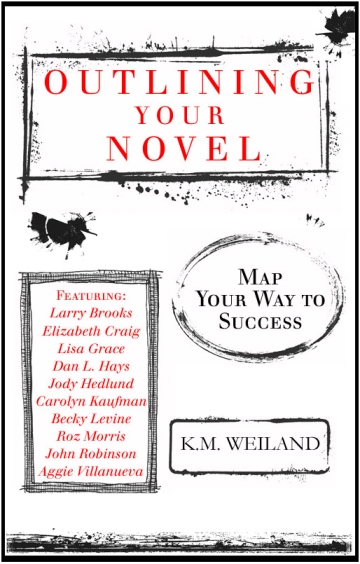Getting to the Core of Your Characters
Leon Surmelian in his book (written forty years ago) Techniques of Fiction Writing, has this to say about creating characters in fiction: “Characterization is a complex and elusive art and cannot be reduced to exact rules or to a comprehensive statement. The more we talk about it, the more we feel has been left out, and this is necessarily so because the human personality remains a mystery, subject to obscure forces; it is a universe it itself, and we are strangers even to ourselves. . . . Characterization requires self-knowledge, insight into human nature . . . it is more than impersonation.”
Getting Real Doesn’t Happen on Its Own
That quote contains some terrific stuff. Too many characters are just that—impersonations of real people. In order to create really real characters, you have to be somewhat of a psychologist and learn about human nature.
Suffice it to say, most of the novels I edit and critique fall way short on creating real characters. And I don’t think it’s only due to not spending enough time working on them. I sense that some of my clients spend a whole lot of time thinking about their characters, but their creations still come across flat and stereotyped.
It may have something to do with laziness and not wanting to work too hard to create each character. It may be that the writer doesn’t think characters have to be all that developed—that as the plot unfolds, the character will just “come into his own” and become real. I’m thinking, though, the real reason is the writer hasn’t gone deep into herself and examined why she is who she is.
I’m not suggesting we all go into therapy for a while or spend years psychoanalyzing ourselves (although some of us—writers especially—might benefit from that). But if we do some digging inside, we’ll find there are certain truths about why we are the way we are. And the first idea I’d like to throw out at you is tied in with what I posted earlier in the year about persona and true essence.
If you missed that post, you might want to read it. Basically, we all present a face to the world—a face we feel will help us survive—which is not wholly who we are.
Some people may really live in that place of “true essence” and that’s great. But populating a novel with characters like that just give us “happy people in happy land” (as James Scott Bell likes to say). We’re more interested in flawed characters, and I bet, if you’re like me, there are some serious flaws lingering under the surface.
Getting to Know You
So, I’m going to share one technique I use when I sit down to create my characters (I’ll share more in future posts). I already at this point have my characters in mind. I know my plot and premise, and I either may already have a lot of the story worked out, or I might have only a germ of an idea.
It doesn’t matter. But at some point I will sit down (for numerous days) and spend time creating the characters that are going to be the heart and blood of my novel.
This time spent is crucial to me, and I never begin writing a novel until my characters are so well fleshed out that I know pretty much everything I need to know about them. And I’m not talking about what they like to eat or what movies they watch. That stuff is inconsequential—trust me.
Those little bits about character that come out in your novel are only coloring, not meat. Most of my novels have up to a dozen main POV characters, so every one of them must be totally real—to me. I don’t let them run off and start behaving without getting to that place first.
I can’t stress enough how vital it is you do this in advance of writing your book. Some writers think it’s fine to just start writing and let the characters run amok to see what they’ll do. That’s all well and good if writing to you is a crap shoot. On the other hand, if you want to write a very specific story and convey very specific themes, this just isn’t going to work. You may be brilliant, but you’re not that brilliant, okay?
The Three Most Important Things!
I write down my list of main characters on a page. Or sometimes I’ll do this on the first page of my character sketches (not actual drawings but thoughts and ideas on them—more on that later). Then I spend some time thinking about these things:
- Their core need (and what they would do if they couldn’t get that need met)
- Their greatest fear
- The incident(s) that wounded them early in life that got them believing a lie
These three points are so helpful and powerful that it’s just possible they are all you need to create each character. If you learn only one thing from my year-long course on Writing the Heart of Your Story, then make it this tip. Tape these three points to your wall if you need to remember them! The last point is the most crucial and the one I spend the most time with.
Each of us has been hurt in the past. Because of that hurt, two things resulted:
- One: we created a false front to protect our heart. Like the girl who was abandoned by her father when she was young and now can’t get close to men or stay in a relationship long. If you look at yourself, you will find something in there like this (Okay, one reader told me I was quite presumptuous to state we all believe some lie. He apparently was perfect and never had a bad thing happen to him in his entire life.) Somewhere in your past you got hurt, and so you’ve formed a persona to survive in the world.
- Two: that hurt makes us believe a lie about ourselves and the world. In this example, the lie this girl believes is that all men walk out and always will. That she can’t trust men or give her heart to them. And that’s why her whole life she’s kept her distance. That’s the outward lie. The other side to that lie turns inward (and you need to look at both parts–they are two sides of the same coin). That part says something about yourself. With this example, the girl believes a lie about herself—that she’s not worthy of being loved.
Need = Fear = Lie (Repeat)
Ah, do you see that? That’s rich, deep, powerful. Okay, that character type is used a lot, especially in chick flicks, but I hope you can see here how we’re getting to the heart of motivation. Now, when you put this girl in various scenes, she is going to react certain ways based on the lies she’s been telling herself her whole life and the lies she believes about other people. This then ties in with her greatest fear (fear of intimacy, fear of abandonment) and her core need, which is . . . have you guessed it?
See the connection? Her core need is to get the very thing she believes is impossible because of the lies she believes. She wants more than anything to be loved, but she can’t get there. She’s blocking her own way.
Your character’s greatest need should be intrinsically tied in with the lie she believes and her greatest fear (which is not getting that need met). If it sounds simple, it really is. It’s our human condition.
Since this is enough to chew on for now, I’ll stop here.
This week, take your protagonist and examine those three core points. Write a page or two exploring his or her needs, fears, and the lies believed. If you’re on a roll, go at it with all your main and even secondary characters. Share what you discover in the comments!












My only issue with this is that I feel the characters, like the plot, should be allowed some fluidity. If I lock characters into a fear or need or life background, I fear I’m disallowing them license to change as the story progresses. Writers often share how the story’s twists and turns sometimes surprise even them as they write. It happens with characters as well. For instance, in my latest novel, all along I thought that one of the main characters had been in awe of his father, but as I wrote the story, I realized in a flash that no, he had HATED his father. It made a vast difference.
I feel we sometimes get to know our characters – even the protagonist – better and better as we write. I would just be wary about writing their core needs and greatest fears in stone. I fear a certain rigidity of the story or a contrived feel to it. Even in real life, we don’t know everything about even those closest to us. I kind of like to keep that “I can’t quite figure him/her out” mystique in my stories. I don’t quite understand EVERYthing about my detective Inspector Darko Dawson character. He still does things that have me scratching my head, and that’s why I love him. I was once a guest at a book club meeting where some of the members asked me why Dawson had behaved in a certain manner. They were surprised and a little amused when I, as the author, expressed my own puzzlement over it. I had a couple of theories, and so did they! It made for a wonderful, lively discussion.
Sure, you need to be open to let your characters organically grow. Often my characters will start doing the strangest things. But here’s the thing: if you really know them, their past, their dreams and fears and needs, the surprising things that surface in your novel will be consistent with who they are. I love being surprised by what my characters say and do–and that happens often, but because I know them deeply, those things are exactly what should be surfacing and spilling into the story. Does this make sense?
Excellent advice. I’m going to copy this post and stick it in my “character notebook,” then revisit my characters. Thanks.
I love this idea, a notebook devoted just to the characters 🙂
Thank you for a thoughtful, useful tool for character understanding and development. You have asked us for verisimilitude; i.e., to apply the human experience to the characters. While I agree with the preceding comment that the writing process sometimes takes over and we see what could not have been seen at the outset, I also agree that analysis can empower the process.
Thanks Susanne:) This is sooo true…in real life as well as in our characters. Those three important points to getting to know your character are priceless! I’m digging deeper. Thanks for the tips 🙂
Great post. I’m tweeting this…twice! 🙂
This is great! And perfect timing. I’m developing my next novel and I’m going to do this with my characters.
The character arc and development for female character main POV is a true challenge.
Thank you Susanne, this is great information.
Una Tiers
I appreciate your analysis on ‘characterization’.
But down the line I feel that the process, suggested by you, is a bit regimentation on the imagination, driving the author.
Having said so, I do agree that some degree of regimentation is necessary to portray characters nearer to real life ones. So that they should adequately support the plot or theme.
Of course, at the end of the day the readers have to vouch for the portrayal, one way or the other.
In general, I think your three questions are quite useful devices in developing your characters. My main reservation is the assumption that there is a single core need, a single greatest fear and a single critical incident that results in believing a lie. It sounds a bit too much like a psychiatric session to address some specific personality aberration. Depending on the plot, that comparison may be appropriate and I think it might work best where there is a single lead protagonist confronting a particular dilemma — i.e. where the plot is analogous to a therapy situation. However, people are complex and have multiple needs, fears and perceptions of reality and not all plots are so readily comparable to a clinical context where the goal is to resolve a specific issue through the protagonist achieving some sort of breakthrough (or failing to do so).
The points provide good guidance, but the writer may need to reach beyond them to add depth and subtlety to the characterizations. My own writing is rich in historical context and what helps me broaden my characters from their initial profile is to ask how they would react to specific events. If you don’t know, then you may need go beyond that profile, even if you’ve pinned down key needs, fears and false beliefs.
Sure, it’s a simplification, but it’s a great place to start because we all have these to some degree. A protagonist confronting a situation is going to bring his needs, fears, dreams, hopes to the situation, so that’s why you need to do more than throw someone into a plot situation. You need to understand human motivation. You may have a better way that works for you to create complex, believable, rich characters, but this is what I’ve come to find gets you to the heart of your characters and the heart of your story.
This is an awesome post I’m bookmarking. I’ve still got some work to do on the heroine of the book I’m releasing in the spring, and I’m getting ready to create the characters for my series. Your post is perfect timing and will be a huge help!
So glad it helps! The next few weeks are going to have much more in character development so keep reading!
Susanne, I’ve actually heard this many times, but don’t remember hearing the obstacles called “lies.” I love it ’cause it’s definitely a way to help achieve what the internal obstacle is. Thank you!
Sorry, I don’t know what an URL is ;.. left it blank.
BUT THANKS – thanks so much for your excellent pointers – yes; one knows one’s characters, and what makes them tick – but have we put our readers in the picture, and have we NOTED to ourselves, the points and reasons for our characters’ make-up?
A really BIG THANKS,CSLAKIN…
Saaskia
Thank you. The URL is your website. The URL for this site is http://www.livewritethrive.com. Means Uniform Resource Locator–as if anyone would care, right?
So far I only really developed the main character in my story. My cousin who also writes sent me a form that she uses for each character. It has everything from physical attributes, to like you said what made them who they are “today”(in your novel). I think a lot of books have stereotypical characters too. There’s usually a shy weak girl who needs rescuing from an over protective obsessive guy and they fall in love in five seconds and get married. But the books that have real characters that are unique are the books that stay with the reader longer. Thanks for more great advice. I’m definitely going to follow your blog from now on and pass on the url to my cousin and friends!
Thanks, Melissa!
Great article, Suzanne. I had the great good fortune to have had Professor Surmelian as my fiction writing teacher at California State, Los Angeles lo those forty years ago. I will never forget his telling us once-about characters-that every character is a survivor of a ship-sinking of one kind or another. The problem is, after we have been rescued, we are so afraid of drowning that we refuse to take off the life jacket that saved us even after we set foot on dry land. Our fear compels us to wear that jacket wherever we go and whatever we do. Needless to say, not only is that apparatus unnecessary, it is cumbersome and uncomfortable. He asked us to indetify the “life jacket” each of us insists on wearing. That is the fear you talk about in this piece.
Wow, that’s really neat–both that you had taken a class from him and the analogy. Thanks for sharing that.
Developing life-like characters comes with a thorough observation of human nature. We writers are introverts by nature, so we often spend a great deal of time watching how other people interact, or take careful mental notes on how we relate with those around us. I study people’s mannerisms and speech patterns and apply them to certain characters in my stories. They come across with much greater credibility than some outrageous persona born of an author too full of him- or herself to notice subtle differences. If, for example, your character is a brain surgeon with a fetish for hunting big game who wins the U.S. presidency, it won’t necessarily be as believable as describing an administrative assistant who has a penchant for wearing 4-inch spike heels every day, despite lower back pain. There’s something about the smaller details in life that attracts readers’ attention. It’s why literature is so much of a different art form than TV or cinema. Writers have to create an image in peoples’ minds.
Great tips! It’s interesting how each writer has a different process, isn’t it–I write my first draft to get to know my character and my second and third and fourth and … draft go back and enrich the text with what I’ve learned while I wrote. On the other hand, I outline the plot in detail before I ever start. 🙂
Terrific post thank you and all the comments too. I will digest them properly but in the meantime am adding this to my reading list. A lot of very informative reading ahead!
I think these three questions are an excellent start for a wounded character, but what about a character who believe a lie not because of a devastating incident, but constant events reinforcing pride? A child who was given everything lives in the lie that she will always have what she wants and will always be taken care of. I feel this is as damaging and legitimate a lie as any caused by tragedy, and wonder if perhaps it isn’t the incidents that wounded them, but rather the incidents that reinforced a false reality, causing them to believe that what happened is only what they are due.
Good point. The lie the character believes often does not stem from a singular incident, although it might. More often, it’s as you describe–a situation in life that continually ingrains a belief about life and oneself. We have these “lies” pounded into us all through our childhood by messed-up parents who are believing their own lies. Humans are a mess, and our job as novelists is to show that.
I love this post! I suppose because I subscribe to the same philosophy of developing characters. But I like the way you simplify it to the core and three questions. I’m guessing those come after your character interview.
I work hard to find out their lie. The magic happens when what I assigned to them isn’t it at all, but I’ve gotten to know them so well, they whisper their secret fear to me.
Anyway, thanks for this!
You’re welcome. This helps me so much when I work on my characters. And congrats on your book contract!
Susanne,
Does it HAVE TO be one incident? Can it be a series (2-3) of incidents that ultimately make the character adopt and believe this lie? I feel that one incident alone isn’t a strong enough rason for my lead to react so strongly. But adding another 2 into her backstory strenghtens her case…does that make sense?
Please say yes 🙂
You are funny! You can do whatever you want. Usually it is a series of hurtful things that happens to us that make us believe lies about ourselves–not necessarily one event only. But it’s the basic idea we’re looking at. Glad this is working for you!
Awesome, thank you m’am! 🙂
Wow! After reading through all of these posts I became speechless! From the main post and the comments, I learned a great deal of tips – everything everyone had said are quite helpful – in a way refreshed things I’ve studied about chracterization. Great post! Thanks to you all.
Thanks Susanne. This is terrific advice. I am just about to start a rewrite of my first novel. I will delve much deeper into my characters. And I agree. Knowing what they eat for breakfast does not drive their personality and character choices like the lies they have told themselves. Beth
This post certainly has plenty of food for thought. One question. What about characters who are sidekicks to the protagonist e.g. Watson to Sherlock Holmes. In many cases, they are simply the foil for the protagonist to express themselves. With Watson, I get the “core need” – a father figure / role model to look up to. But is there a fear and a lie embedded in there somewhere?
The more you can develop the core need, fear, and lie for each of your characters, the more they will have clear motivation and will feel real to your readers. Doyle may not have done this with Watson, and often in genre mysteries, secondary characters are only there for plot purposes. But there are glimpses of Watson’s fear, as he is a bit codependent on Holmes at times (to me) and maybe his fear is he can’t really stand on his own and validate his life without Sherlock defining him. Or maybe I’m stretching. He’s been portrayed a little differently in different movies and TV shows, but in the stories he acts more as the storyteller, since that’s his role to chronicle Sherlock’s cases.
So, I’m a bit confused. What exactly is the core need in relation to the goal? If the mc is actively pursuing the goal, would it make sense for her to be blocking her own way from getting there?
The core need is tied in with the inner motivation. His need pushes him toward the outward, visible goal. We often sabotage our efforts to reach our goals, and that’s usually because of the early wounds we’ve suffered, the lies we believe, which creates our greatest fear. So the lie-need-fear trifecta is a very powerful and great place to start when developing characters. I often list all my main and secondary characters, and before I get too far in development, I start with the wound, core need, and lie.
I see, thanks!
Would freedom be a good core need?
Sure. There are all types of freedom. Your character could need to escape a situation and be literally free. Or she might need to free herself from shame or guilt.
Thanks!!
I have all these questions! Anyway, is it okay if my character’s greatest fear motivates my character to fulfill her core need instead of being an obstacle?
I find that using this strategy multiple times per character is the most effective. A character can have one fear that spreads to different needs and different lies. It only makes the character more complex, flawed
I find your tip very helpful. I am just having a hard time trying to figure out the lies people tell themselves. Do you have a guide on how to figure out this part ?
Thank you
It may not be easy to figure that out. But if you come up with a painful experience in the past (whether a one-time event or something that happens over a length of time), you can think about how that character would feel about herself and the world because of it. When someone tells us we’re ugly, and that person matters to us, or many people tell us that, we equate that with being less than or undesirable. So the lie we would tell ourselves because of that is that no one will ever love us or think we’re attractive, and that will affect how we treat ourselves and the choices we make going forward. The thing to focus on, though, is your premise and plot, so that the lie your character believes will impact their character arc as they pursue their goal.